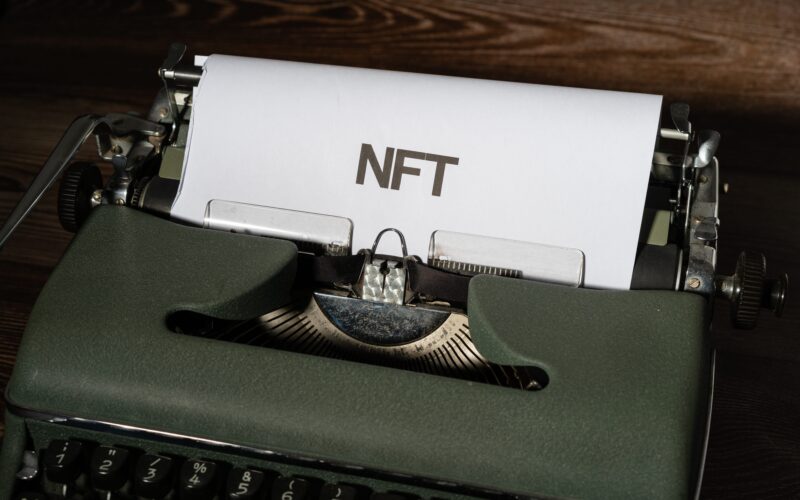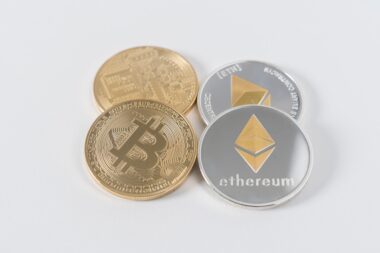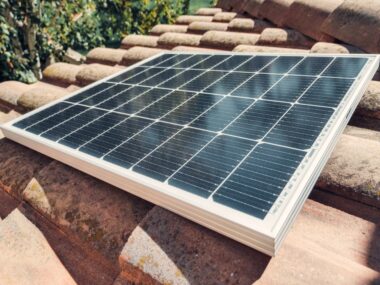NFTs have increased in popularity in 2022 with everything from art and music to tweets and digital perfume available to purchase through the new marketplace. But with an increase in popularity comes increased scrutiny on their environmental impact. How eco-friendly are NFTs and what kind of impact have they already had? Keep reading as we breakdown NFTs and if they have a place in a sustainable world going forward.
What are NFTs?
NFT stands for non-fungible token, a digital file representing real-life assets like art, music, games, videos – typically a unique item. NFTs are bought and sold online via an NFT marketplace, generally using cryptocurrency like Etherum. NFTs are big business these days valued at 15.7 billion USD in 2021 and projected to reach 122.43 billion by 2028.
How Much Energy do NFTs Use?
According to memoakten, an average single NFT transaction generates 100-500kg CO2. In comparison, according to digiconimist, an average single Ethereum transaction generates 148 kg CO2 and an average Bitcoin transaction generates 1210 kg CO2.
In relative terms, according to the EPA, 100kg of CO2 is equivalent to driving 248 miles and charging 12,164 smartphones. Another study compared one NFT transaction to two months worth of electricity usage for an EU resident. So it’s fair to say NFTs use a considerable amount of energy, especially when there’s 3.200 NFT transactions each day.
Why are NFTs Bad for the Environment?
People buy NFTs using cryptocurrency like Ethereum. Ethereum and other cryptocurrencies like Bitcoin require energy intensive resources to mint and transact. Currently, the majority of energy used for cryptocurrency comes from the fossil fuel industry, only 39% comes from renewable sources. That being said, with the falling cost of renewable energy sources, cryptocurrency miners are expected to use this energy source more in the future.
How Can we Make NFTs More Eco-Friendly?
1. Eco-Friendly Blockchains
Most NFTs are minted on the Ethereum blockchain which currently uses 112 TWh of energy per year. For comparison, this is similar to how much the Netherlands uses. However, more eco-friendly blockchains like Solana (SOL), Tezos (XTZ) and Algorand (ALGO) also mint NFTs. As part of their sustainability efforts, Solana claims to use as little energy as two Google searches. Eco-conscious NFT buyers should research and understand the different blockchains and marketplaces before making an investment.
2. Ethereum Moving to Proof-of-Stake
Ethereum, the cryptocurrency that most NFTs use, is moving to Proof-of-stake (PoS) in 2022. Ethereum currently uses Proof-of-work (PoW) requiring miners to use energy intensive equipment and practices to add to the chain. By moving away from this protocol, Ethereum aims to reduce the amount of energy used by 99.5%, making it a much more eco-friendly cryptocurrency.
Read More: What’s the Most Eco-Friendly Cryptocurrency?.
3. Clean Energy Machines
Currently, the majority of computers mining cryptocurrency and minting NFTs run using fossil fuel based energy. By switching this energy consumption to a renewable energy source, NFTs become more eco-friendly overall. In addition to using more renewable energy, NFTs can help fund renewable energy efforts globally. Nyukia (Nyukiaverse) is a metaverse selling the HaPeeBee NFT helping underserved populations have access to clean energy, promote environmental protection, and accelerate the growth of renewable energy.
4. Lazy Minting
Most marketplaces allow a creator to upload their NFT before they go on sale. This process requires energy and takes up storage space for assets that don’t have a guaranteed buyer. Without a buyer or demand, they could end up sitting on the blockchain and consuming energy for a long time. Lazy minting delays upload until someone purchases the NFT. This practice could reduce the NFTs carbon footprint by approx. 2x.
Sustayn is designed to present the most useful recommendations for environmentally friendly approaches and items. We update links when possible, but note that links can be broken and pricing, where noted, can be subject to change.









170 comments
I appreciate you sharing this article post.Really looking forward to read more. Really Cool.
pharmacy store layout design french pharmacy products online
What’s up i am kavin, its my first time to commenting anywhere, when i read this paragraphi thought i could also make comment due to this brilliant paragraph.
Thanks for sharing your thoughts on Click here. Regards
An intriguing discussion is worth comment. I do think that you need to publish more about this issue, it may not be a taboo subject but generally folks don’t talk about such issues. To the next! Many thanks!!
I will immediately take hold of your rss as I can’t to findyour email subscription link or e-newsletter service.Do you’ve any? Please allow me understand so that I may just subscribe.Thanks.my blog well-balanced healthy eating
I read this article completely regarding the comparison of most recent and previous technologies,it’s remarkable article. 0mniartist asmr
e 57 arıza kodu Kendra Whitney e 6 arıza kodu kombi Mayur Calvert e 3 arıza kodu Willow House e 128 arıza kodu Jamil Beach e 10 arıza kodu
Usually I don’t read article on blogs, however I wish to say that this write-up very forced me to check out and do so! Your writing style has been amazed me. Thank you, quite nice post.
Thanks for your marvelous posting! I genuinely enjoyed reading it, you will be a great author.I will remember to bookmark your blog and may come back from now on. I want to encourage you continue your great work, have a nice morning!
I really loved this piece of content. I’ll be back to read more. Thank you for creating it!
Really informative blog.Much thanks again. Much obliged.
I cannot thank you enough for the blog article.Thanks Again. Want more.
Great, thanks for sharing this blog.Much thanks again. Really Great.
Thanks for sharing, this is a fantastic article. Really Cool.
I really like and appreciate your article post.Really thank you!
I?¦ll right away grasp your rss feed as I can not to find your e-mail subscription hyperlink or e-newsletter service. Do you’ve any? Kindly let me realize in order that I could subscribe. Thanks.
wow, awesome blog article.Thanks Again. Will read on…
I like reading a post that will make men and women think. Also, thanks for allowing me to comment!
Your way of explaining the whole thing in this paragraph is actually pleasant,all can easily be aware of it, Thanks a lot.
I’ll right away seize your rss as I can not to find your e-mail subscription link or e-newsletterservice. Do you’ve any? Kindly allow me recognise in order that I may subscribe.Thanks.
It’s actually a great and useful piece of info. I am happythat you just shared this useful info with us. Please stay usup to date like this. Thanks for sharing.
Very good blog post.Really thank you! Really Cool.
Very neat blog article. Will read on…
Muchos Gracias for your blog post.Thanks Again.
When someone writes an post he/she retains the idea of a user in his/her brain that how a user can be aware of it. Thus that’s why this article is amazing. Thanks!
Heya i am for the first time here. I came across this board and I find It trulyhelpful & it helped me out much. I’m hoping to give something again and aid others like you aided me.
I blog frequently and I really thank you for your content.The article has truly peaked my interest.I will book mark your blog and keep checking for new information about once perweek. I subscribed how to make a man orgasm your RSS feed as well.
Whoa all kinds of amazing info!write my admissions essay how to write a concluding paragraph for an essay coursework writers
What’s Happening i am new to this, I stumbled upon this I’ve discovered Itabsolutely helpful and it has aided me out loads. I’m hoping to give a contribution & help other users like its helped me.Great job.
I love reading through a post that will make men and women think. Also, thanks for permitting me to comment!
wonderful points altogether, you just gained a new reader. What would you recommend in regards to your post that you made some days ago? Any positive?
hi!,I like your writing so much! share we communicate more about your article on AOL?I require an expert on this area to solve my problem.Maybe that’s you! Looking forward to see you.
Awesome blog article.
Thanks for making this awesome blog post. I really appreciated it.
What’s Happening i am new to this, I stumbled upon this I’ve found It positively helpful and it has aided me out loads. I hope to contribute & help other users like its aided me. Good job.
Very informative post.Really thank you! Want more.
You take turns shifting these counters across the grid, with the purposebeing to seize your opponent’s base” with a single Pokemon.
Very informative blog post.Really thank you!
Could the Acer Iconia W4 change the opinion belonging to the technology life? Usually you would put a keypad on exit/entry point such as in front of the door or back of the of doors. Well one for this big things is 4G compatibility.
Hi, I do believe this is an excellent blog. I stumbledupon it 😉 I may come back once again since i have book-marked it. Money and freedom is the greatest way to change, may you be rich and continue to help others.
I want to to thank you for this very good read!! I absolutely loved every bit of it. I have got you bookmarked to look at new things you postÖ
Howdy! Would you mind if I share your blog with my twitter group?There’s a lot of people that I think would really appreciate your content.Please let me know. Thanks
sildenafil citrate pills how fast does sildenafil work
It’s great that you are getting thoughts from this piece of writing as well as from ourdiscussion made at this place.
It’s going to be finish of mine day, however before end I amreading this fantastic post to increase my know-how.
Hello, its good post on the topic of media print, we allunderstand media is a impressive source of information.
Fantastic blog. Awesome.
Really appreciate you sharing this article post.Really looking forward to read more. Cool.
Looking forward to reading more. Great post.Thanks Again. Will read on…
Very neat blog post. Really Cool.
Hey, thanks for the post.Really thank you! Much obliged.
Appreciate you sharing, great blog article.Much thanks again. Keep writing.
A big thank you for your blog post.Thanks Again. Awesome.
Nicely put. Thanks!how to write an essay introduction paragraph essays writing services college writing services
I really appreciate this post. Ive been looking everywhere for this! Thank goodness I found it on Bing. You’ve made my day! Thank you again
With thanks. I value this!community service essays essay writing ppt copywriting service
Thanks a lot for the blog. Will read on…
Hey, thanks for the blog post.Much thanks again. Awesome.
Very good article.Really thank you! Want more.
Awesome blog article.Really thank you! Really Cool.
Really enjoyed this article. Awesome.
Appreciate you sharing, great blog post.Thanks Again. Much obliged.
A round of applause for your blog.Thanks Again. Cool.
A round of applause for your article. Want more.
I am so grateful for your article post.Much thanks again. Much obliged.
This means that if you want to win $100 you are risking $110.
I really like and appreciate your post.Really thank you! Keep writing.
I really liked your blog.Really looking forward to read more. Great.
Thank you ever so for you blog article.Really thank you! Awesome.
I am so grateful for your blog article.Really looking forward to read more. Want more.
Great article post.Thanks Again. Want more.
Looking forward to reading more. Great post.Really thank you! Will read on…
Wow, great post.Thanks Again. Keep writing.
A round of applause for your blog article.Much thanks again. Cool.
I really enjoyed this article, thank you for creating it. I’ll return for more. See ya soon!
ivermectin pinworms ivermectin for chickens
Hey there! I simply want to give you a huge thumbs up for the great info you have got here on this post. I will be coming back to your blog for more soon.
Thanks so much for the blog article.Much thanks again. Much obliged.
I really liked your blog article. Will read on…Loading…
Having said that, I suppose any jaded fan base could say the similar.
Great post. I was checking constantly this blog and I am impressed! Very useful info particularly the last part 🙂 I care for such info much. I was looking for this certain information for a very long time. Thanks and good luck.
Thanks a lot for the article post. Will read on…
guadagnare denaro bitcoinbitcoin for live 9fe5cd1
Thanks again for the post.Really thank you! Great.
I need to to thank you for this excellent read!! I absolutely enjoyed every bit of it. I’ve got you bookmarked to check out new things you postÖ
What’s up, I log on to your blogs daily. Your story-telling style is awesome, keep it up!
Really quite a lot of beneficial info!writer essay essays writer writing services business
It’s actually a cool and useful piece of info. I am glad that you simply shared this helpful information with us. Please stay us informed like this. Thanks for sharing.
I appreciate you sharing this post.Thanks Again. Really Cool.
A round of applause for your blog.Really thank you! Fantastic.
I cannot thank you enough for the blog.Much thanks again. Will read on…
Appreciate you sharing, great blog article.Really thank you! Really Cool.
wow, awesome blog.Thanks Again. Much obliged.
Very informative blog.Thanks Again. Great.
Im grateful for the article.Much thanks again. Cool.
Thanks a lot for the blog post. Cool.
I truly appreciate this blog post.Really thank you!
I don’t even know how I stopped up right here, but I believed this publish was great.I do not know who you are however definitely you’re going toa famous blogger if you aren’t already. Cheers!
Major thanks for the blog.Thanks Again. Cool.
Oh my goodness! an amazing article dude. Thank you Nevertheless I am experiencing issue with ur rss . Don’t know why Unable to subscribe to it. Is there anybody getting identical rss problem? Anyone who is aware of kindly respond. Thnkx
Thank you ever so for you blog article. Much obliged.
I really liked your blog post.Much thanks again. Great.
Thanks for sharing, this is a fantastic post.Really thank you! Much obliged.
I blog quite often and I really thank you for your information. This great article has truly peaked my interest. I will take a note of your blog and keep checking for new information about once a week. I opted in for your RSS feed too.
Thanks for the article.Much thanks again. Want more.
Really informative blog.Thanks Again. Will read on…
Enjoyed every bit of your post.Much thanks again. Much obliged.
Traditionelle Verwendung des Pilzes zu medizinischen Zwecken, zum Beispiel zur Stärkung der Immunität
Thank you, I have recently been looking for info about this topic for a long time and yours is the greatest I’ve found out till now. However, what about the conclusion? Are you positive concerning the supply?
Looking forward to reading more. Great post.Much thanks again. Cool.
creative writing english coursework coursework writers
Hello friends, fastidious paragraph and fastidiousarguments commented at this place, I am truly enjoying by these.
I dugg some of you post as I thought they were very helpful very helpful
Great article post.Really looking forward to read more. Great.
north hills apartments aspen park apartments fulton apartments
Enjoyed every bit of your blog.Really looking forward to read more. Great.
Thanks for your personal marvelous posting!I quite enjoyed reading it, you might be a great author.I will always bookmark your blog and may come back from nowon. I want to encourage continue your great writing, have a nice afternoon!
Enjoyed every bit of your post.Really thank you! Will read on…
I really liked your blog post.Really looking forward to read more. Really Great.
Im obliged for the blog article.Much thanks again. Fantastic.
Very informative blog.Much thanks again. Want more.
Im thankful for the blog article.Much thanks again. Great.
Wow, great blog.Really looking forward to read more. Will read on…
I truly appreciate this post.Really thank you! Cool.
Major thankies for the post.Thanks Again. Really Great.
Hey there just wanted to give you a quick heads up and let you know a few of the pictures aren’t loading correctly. I’m not sure why but I think its a linking issue. I’ve tried it in two different internet browsers and both show the same results.
This is one awesome blog.Really thank you! Great.
Great article post.Really looking forward to read more. Want more.
Really enjoyed this blog article.Really looking forward to read more. Cool.
I like what you guys are up too. This sort of clever work and coverage!Keep up the great works guys I’ve added you guys to my own blogroll.
Play this Elton John ballad, and you’ll have the chorus melody stuck on the entire party’s hit parade.
Looking forward to reading more. Great article.Much thanks again. Great.
I am truly happy to glance at this blog posts which consists of lots ofuseful information, thanks for providing these information.
There is certainly a lot to learn about this subject. I love all of the points you’ve made.
I like what you guys tend to be up too.This type of clever work and coverage! Keepup the very good works guys I’ve added you guys to my personal blogroll.
ยุคนี้อะไรที่ง่ายสะดวกรวมทั้งไม่เป็นอันตรายย่อมดีมากยิ่งกว่าเสมอ แทงบอลก็แบบเดียวกัน สมัยปัจจุบันนี้ ยุคนี้จึงควรพนันบอลออนไลน์เท่านั้น UFABET เว็บพนันบอลออนไลน์ที่เก็บรวบรวมเกมคาสิโนไว้มากมาย ค้ำประกันความน่าวางใจ จ่ายจริงจะต้อง UFABET
Generally I don’t read post on blogs, but I would like to say that this write-up very compelled me to take a look at and do it! Your writing taste has been surprised me. Thanks, very great article.
What’s Taking place i’m new to this, I stumbled upon this I have discovered It positively useful andit has aided me out loads. I am hoping to contribute & help different customers likeits helped me. Good job.
You just minus 1 from the decimal odds, turn that number into a fraction and cut down it down toit’s simplest kind.
A round of applause for your blog.Really looking forward to read more. Awesome.
I am so grateful for your article.Much thanks again. Awesome.
Thanks so much for the post.Really thank you! Really Great.
Awesome blog.Really looking forward to read more. Will read on…
I truly appreciate this article.Really looking forward to read more. Fantastic.
Great blog.Really looking forward to read more. Awesome.
I really liked your blog. Cool.
I appreciate you sharing this blog article.Really thank you! Will read on…
Major thanks for the blog post. Keep writing.
Good day! Would you mind if I share your blog with my zynga group? There’s a lot of people that I think would really enjoy your content. Please let me know. Cheers
Excellence in craftsmanship and technology is a solid foundation for Rolex.
Very good blog post.Much thanks again.
Muchos Gracias for your post.Thanks Again. Will read on…
This is one awesome blog article.
F*ckin’ amazing things here. I’m very happy to see your article. Thank you so much and i am looking ahead to touch you. Will you kindly drop me a e-mail?
Really enjoyed this blog post.Really thank you! Awesome.
Hey there! I just wanted to ask if you ever have any problems with hackers?My last blog (wordpress) was hacked and I ended up losing a fewmonths of hard work due to no data backup. Do you have any solutions to protect againsthackers?
I truly appreciate this blog article.Thanks Again. Really Cool.
It’s in reality a great and helpful piece of info.I’m glad that you simply shared this useful info with us. Please keep us informed likethis. Thank you for sharing.
Thanks for sharing, this is a fantastic article post.Much thanks again. Fantastic.
Enjoyed every bit of your blog.Thanks Again. Great.
I think this is a real great blog post.Much thanks again. Really Cool.
Really appreciate you sharing this blog.Much thanks again. Really Cool.
I truly appreciate this post.Really thank you! Much obliged.
Looking forward to reading more. Great blog.Thanks Again. Will read on…
tamoxifen bone pain nolvadex – п»їdcis tamoxifen
Thanks for the blog post.Really looking forward to read more. Great.
Thank you for your post.Thanks Again. Great.
Very informative article post.Thanks Again. Will read on…
I read this article fully on the topic of the resemblance of hottest and previous technologies, it’s amazing article.